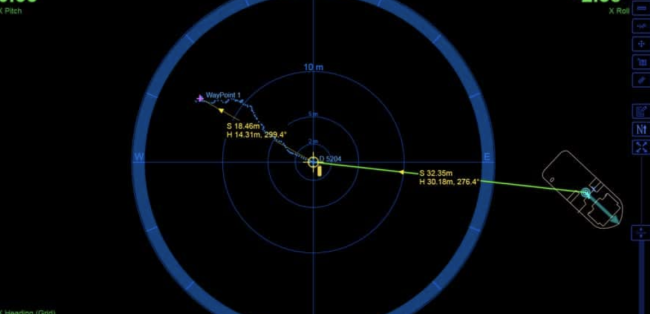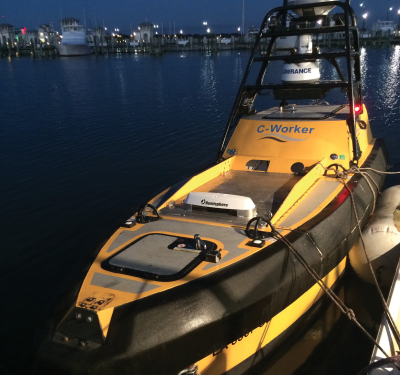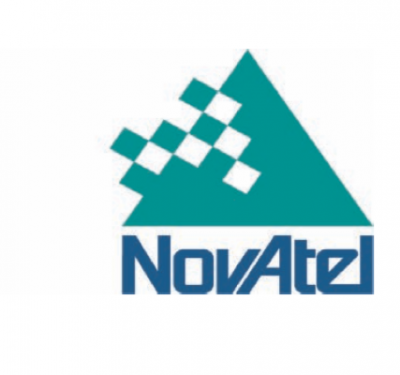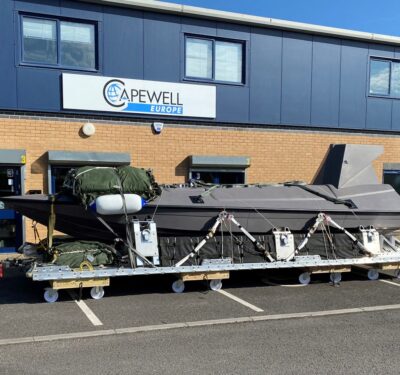
Fugro’s Uncrewed Vessel
Geo-data specialist Fugro has chosen underwater positioning and communications technology from Sonardyne to support its global fleet of uncrewed surface vessels (USVs) and remotely operated vehicles (ROVs). Fugro will integrate Sonardyne’s Mini-Ranger 2 Ultra-Short BaseLine (USBL) positioning system, configured with the company’s Marine Robotics software extension pack, into its new 12 m-long Blue Essence USV.
Mini-Ranger 2 with the enabled Marine Robotics pack will allow the Blue Essence to be used to deploy, track, command and control the Blue Volta electric remotely operated vehicles (eROVs) and autonomous underwater vehicles (AUVs) as part of inspection, survey and data harvesting projects, all controlled from Fugro’s onshore remote operations centers.

Mini-Ranger 2 graphic user interface.
Mini-Ranger 2 is designed for use from small vessels, including USVs, where survey-grade positioning performance is required. It can simultaneously track 10 targets at very fast update rates, is quick to install and has a standard operating range of 995 m, extendable to 4000 m. Sonardyne’s Marine Robotics software pack unlocks valuable additional capability when used with a compatible subsea vehicle mounted instrument such as AvTrak 6. This includes secure data exchange and remote control of multiple AUVs deployed in swarm scenarios.
The USBL method of underwater acoustic positioning uses a transceiver mounted on a pole under a ship, and a transponder on an ROV. The transceiver sends an acoustic pulse which is received by the subsea transponder. It then replies with its own acoustic pulse. The time from the transmission to receipt of reply is measured and converted to a range. To calculate a subsea position, the USBL calculates both a range and an angle from the transceiver to the subsea beacon. The transceiver head normally contains three or more transducers separated by a baseline of 10 cm or less. Phase-differencing within this array is used to calculate the direction to the subsea transponder.
The first Blue Essence USV will be delivered to Fugro’s base in Perth in February. Construction of further vessels are under way at SEA-KIT’s bespoke facility in Tollesbury, UK, where integration of the Mini-Ranger 2, complete with hull-mounted acoustic transceiver will take place.
Ivar de Josselin de Jong, the Global Solution Director for Remote Inspection at Fugro, said the company is developing “remote and autonomous solutions for a safer, more sustainable and more efficient approach to the construction and maintenance of marine assets. Our fleet will deliver an entirely remote-controlled inspection solution and this will play a role in the rapidly growing offshore wind sector.”






